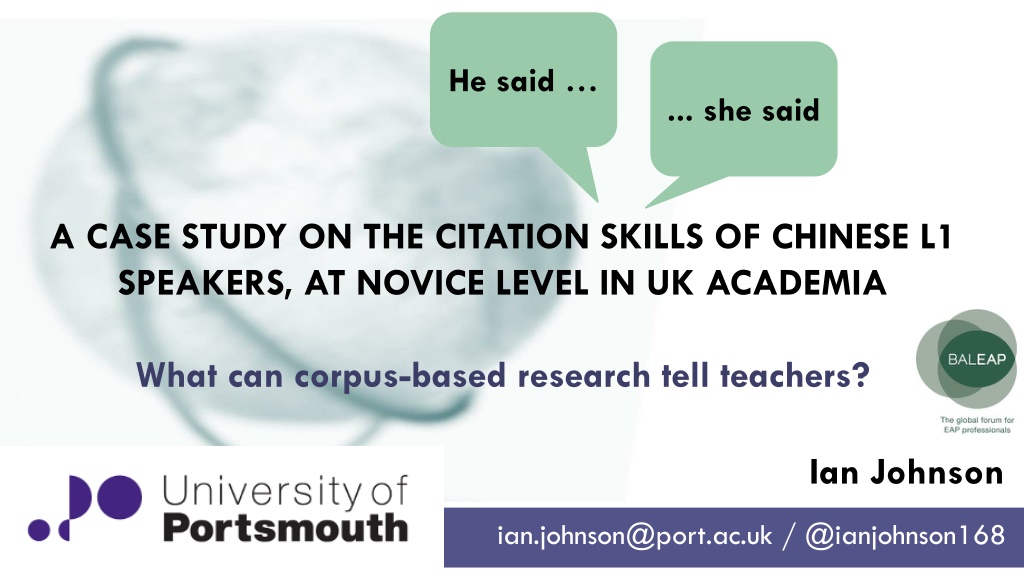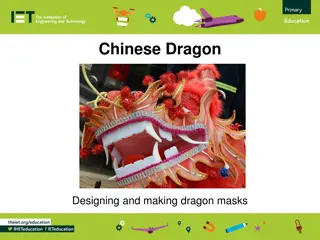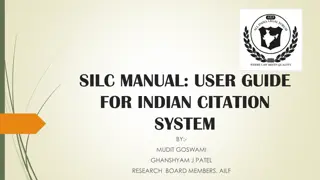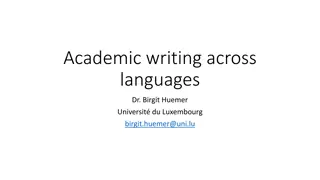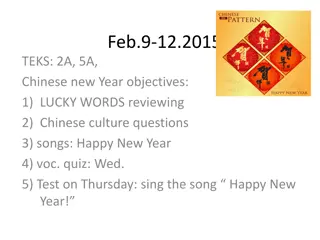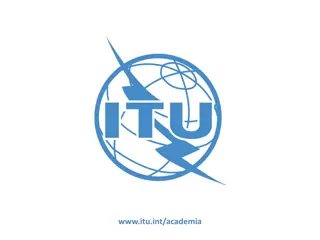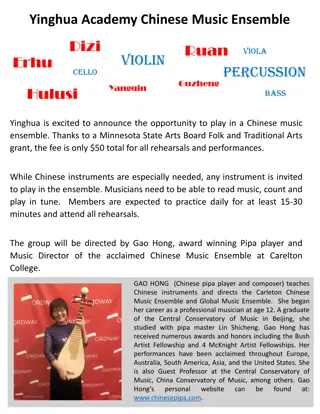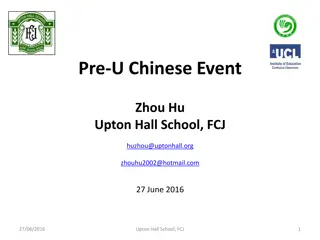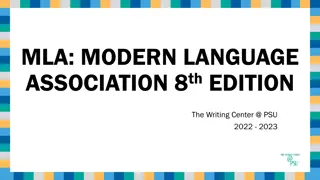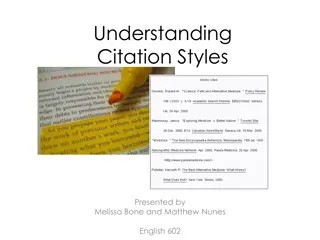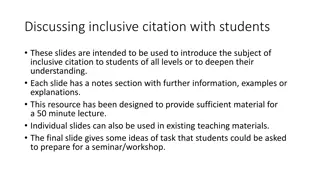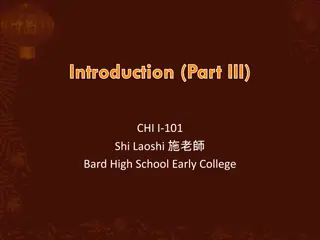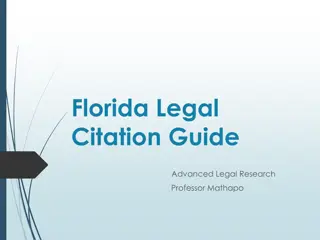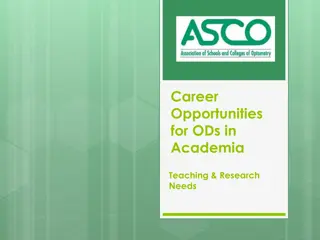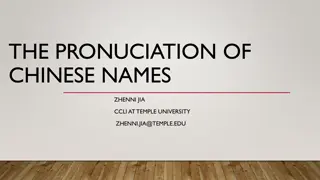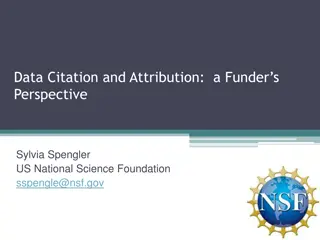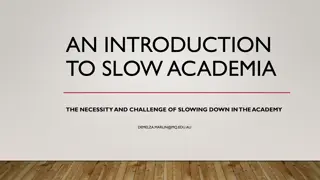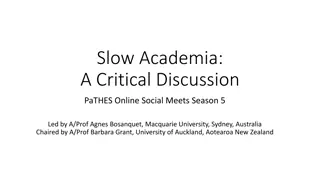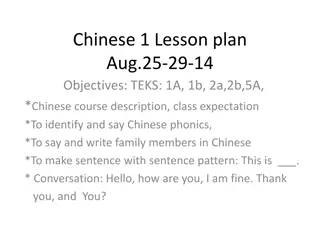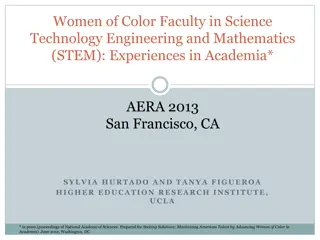Understanding Citation Practices of Chinese L1 Speakers in UK Academia
This study examines the citation skills of Chinese L1 speakers at novice level in UK academia, exploring differences from proficient writing and pedagogical implications. It delves into the complex nature of citation, its ties to plagiarism concerns, and the impact of pedagogy on stance-taking. The research emphasizes the importance of integrating Academic Literacies and EAP principles in teaching practices to enhance students' citation proficiency.
Download Presentation

Please find below an Image/Link to download the presentation.
The content on the website is provided AS IS for your information and personal use only. It may not be sold, licensed, or shared on other websites without obtaining consent from the author. Download presentation by click this link. If you encounter any issues during the download, it is possible that the publisher has removed the file from their server.
E N D
Presentation Transcript
He said ... she said A CASE STUDY ON THE CITATION SKILLS OF CHINESE L1 SPEAKERS, AT NOVICE LEVEL IN UK ACADEMIA What can corpus-based research tell teachers? Ian Johnson ian.johnson@port.ac.uk / @ianjohnson168
Research questions 1. How, and to what extent, do the citation practices of Chinese L1 speakers at novice level in UK higher education, diverge from those found in proficient exemplar writing? 2. How can pedagogy respond to the findings and their implications?
Underpinnings: Citation Citation as: highly complex: 21 discrete learning targets (Pecorari, 2013). problematic: tied to plagiarism concerns, often alien to transitioning L1 Chinese students (Liu, 2005). rite of passage:key to dialogic (Bakhtin, 1981) writing, and claiming membership of the discourse community (Groom, 2000, p. 66). normative: within UK HE, but (arguably) unavoidably so. under-studied at novice level: Much previous work (e.g. Hyland, 1999; Bloch, 2010; Petric & Harwood, 2013; Nesi, 2014) but at higher proficiencies
Underpinnings: Pedagogy An inclusive writing pedagogy, combining insights and shared principles from Academic Literacies and EAP, is desirable (Wingate & Tribble, 2012) Citation closely affects stance-taking (orientation); effective pedagogy can impact both simultaneously Sampled writing was loosely within the Social Sciences, where writers typically treat cited claims and anticipated reader reactions with cautious deference (Hyland & Jiang, 2016) Li and Wharton (2012) found L1 Mandarin writers, using L2 English, made language choices that led to typically more assertive stances
Citation and stance Non-integral (Swales, 1990) citation: The Earth is flat (Smith, 2010) Integral (Swales, 1990) citation: Smith (2010) believes that the Earth is flat Via reporting verbs, writers endorse , acknowledge or distance (Martin & White, 2005; Lee, 2010) NNS use citation to showcase lexical range (Bloch, 2010) and/or literature consultation (Nesi, 2014) While the rhetorical considerations may be outweighed when choosing reporting verbs, their rhetoricaleffectson the reader occur regardless
Why? Its complicated! As the text unfolds, patterns emerge, some of which acquire added value through resonating with other patterns in the text or context of situation behind it lies the potential that informs every choice made by the speaker or the writer, and in terms of which these choices are interpreted by listeners or readers (Halliday & Matthiessen, 2014, p. 63, my emphasis) For example, X claims would typically be challenged either by patterning with an adversative (ibid., p. 612) conjunction such as However, or by the introduction of a counter claim at a later point.
Sample Analogue corpus (Chinese Learner English [CLE]) 178 draft essays, on sociological topics Produced six weeks after arrival in U.K; L1 Mandarin/Cantonese 207,000 words Exemplar corpus (British Academic Written English [BAWE]) Social Sciences sub corpus of the BAWE corpus (Nesi, Gardner, Thompson, Wickens, et al., 2009) 1,999,130 words Nesi s (2014) analysis of BAWE citations acted as a model
Corpus Query Language Additional capture examples 1. Present Perfect tense: X has said 2. Follow-on citations: X also said 3. Irregular citations X, he said Original (Nesi, 2014) [tag = "NP.?"] [word = "et"]? [word = "\."]? [word = "al"]? [word = "\."]? [word = "\("] [tag = MC"] [word = "\)"] [tag = "VV|VO|VVD|VVZ|VM"] Modified to: For those who are not corpus linguistics enthusiasts, understanding of this slide is not necessary to the overall presentation! Changes to Nesi s language shown in red allowed the additional data capture (see above) related to the irregular patterns of student citation which fell within my research remit. The changes shown in green merely reflect different notation in two different corpus tagging systems: respectively UCREL/CLAWS for Nesi s work on the BAWE corpus, SketchEngine s Treetagger for my own corpus. [tag = "NP.?"] [word = "et"]? [word = "\."]? [word = "al"]? [word = "\."]? [word = "\("] [tag = "CD.?"] [] {0,3} [word = "\)"]? [tag = "VV.*|MD|VH.*"] Sufficiency question: NoCQL discovered all citation attempts
Results Log Likelihood (Keyness) Reporting Verb ****106.65 Say ****36.61 Show ***12.33 Find **10.12 Mention **7.1 Claim 3.35 Argue *4.14 Suggest *4.82 Explain **6.86 Believe
Analysis Reporting verb distribution confirmed the notion of endorsement or over-assertive stance-taking by novice L2 writers Other results from my study highlighted factors that increased the same effect: Citations in past tense: 57% novices vs. 34% at proficiency (BAWE) Mental process verbs: 1% for novices vs. 9% at proficiency (BAWE) Included direct quote: 31% for novices vs. 22% in journals (Pickard, 1995)
What should teachers know? Scaffolding learners towards command of a limited yet useful range of reporting verbs beats striving for lexical breadth Reporting verbs are not the only/first aspect of citations attended to But - 5 mark average gain if using five+ reporting verb clauses versus one within essays (limitations of this finding are acknowledged) Learners likely to default to say , show and find as na ve substitutes Benefit in steering learners towards less assertive patterns Use of the co-text is helpful, and obtainable; directly via the corpus or through online platforms such as the British Council website, which use resources based on the BAWE (Nesi et al., 2009)
Not this way http://www.port.ac.uk/students/academic-skills-unit/
A teaching model High Low Degree of commitment Believe Demonstrate Find State Suggest Claim Argue Show The proposed teaching activities which follow aim to sensitise learners to the difference between Show(endorse), State (acknowledge) and Argue (distance).
Diagnostic/discussion What, if any, meaning differences are there between: Johnson (2016) argued that drinking green tea is good for weight loss Johnson (2016) stated that drinking green tea is good for weight loss Johnson (2016) showed that drinking green tea is good for weight loss
Exploring the corpus Using two different colours, to the left of the reporting verbs, highlight all: Adverbs Noun phrases Which of the three verbs most often comes after: Adverbs Noun phrases Neither
Deduction Choose one reporting verb from show, argueand state to complete the group of sentences: Similarly, Perrow (1973) that organisational change through managerial grids, training and job enrichment is ineffective men and women generally think equally people learn the required behaviours, exhibit them to gain rewards, and performance improves , by late 1930 the balance of class power had shifted in favour of the labour movement , the BNP s electoral breakthrough of 2003 needed re-legitimisation from the 2004 elections However, Carter et al (2001) Hamner (1976) and Luthans (1974) However, as Higgins (1987) ? _______ Most importantly, as Renton (2005) NB: there are three such blocks presented together in the real activity, one for each verb
Establishing rules The verb ___________ is often used to positively report something found in academic research or study. The verb ___________ is often used to report an idea or opinion within a wider academic debate, but not as a definite fact . The verb ___________ is often used to report neutrally something that has been written or said . Can you think other verbs to achieve any of the same effects?
Knowledge Application: gap fill Choose the most appropriate reporting verb from argue, show or state in these sentences: Analysis by Sekine et al (1989) __________ that neither the AER or ZPA formed in the mice However, O Connor (1999) ___________ travel agencies are good at searching and packaging loads of information Fosu (1991) __________ , however, that by entering manufacturing share separately, Balassa (1984) assumes exports . Wright et al (2001) ________ food taste preferences are now inextricably linked to artistic design and media manipulation . Parsons (1982) _________ through a probit model that factors like mortality, age . Beck (1992) _________ that it was after the 1950s that consumers became more conscious about their identity
Limitations/Considerations Students may dislike fragmented corpus outputs While Thompson and Tribble (2001) suggest extensions using learner corpora, such corpus outputs will likely contain unhelpful errors Teacher mitigation by hygiening outputs can be time-consuming Corpus-based work may occur online and on paper; however, both require teacher and learner training There is debate as to whether dictionary training is equally effective Teachers being informed by the corpus and learners using it are two different things. This study emerges in stronger support of the first.
References Bakhtin, M. (1981). The dialogic imagination. Austin: University of Texas Press. Bloch, J. (2010). A concordance-based study of the use of reporting verbs as rhetorical devices in academic papers. Journal of Writing Research, 2(2), 219-244 Gardner, S. & Nesi, H. (2013). A classification of genre families in university student writing. Applied Linguistics, 34(1), 25-52 Groom, N. (2000). A workable balance : Self and sources in argumentative writing. In S. Mitchell & R. Andrews (Eds.) Learning to argue in higher education, (pp. 65-73). Portsmouth, NH: Boynton Cook Halliday, M. & Matthiessen, C. (2014.) Halliday s introduction to functional grammar. (4th ed.). Abingdon: Routledge Hyland, K. (1999). Academic attribution: Citation and the construction of disciplinary knowledge. Applied Linguistics, 20(3), 341- 367 Hyland, K. & Jiang, F. (2016). Change of attitude? A diachronic study of stance. Written Communication, 33(3), 251-274 Lee, S-H. (2010). Attribution in high- and low- graded persuasive essays by tertiary students. Functions of Language, 17(2), 181- 207. Li, T. & Wharton, S. (2012). Metadiscourse repertoire of L1 Mandarin undergraduates writing in English: A cross-contextual, cross- disciplinary study. Journal of English for Academic Purposes, 11(4), 345-356 Liu, D. (2005). Plagiarism in ESL students: is cultural conditioning truly the major culprit? ELT journal, 59(3), 234-241
Martin, J.R. & White, P.R.R. (2005). The language of evaluation. Basingstoke: Palgrave Nesi, H. (2014). Corpus Query Techniques for investigating citation in student assignments. In M. Gotti & D. Giannoni (eds.) Corpus analysis for descriptive and pedagogic purposes (pp. 85-106). Bern: Peter Lang. Nesi, H., Gardner, S., Thompson, P., Wickens, P. and associates (2009). British Academic Written English Corpus. Retrieved via SketchEngine (A. Kilgariff et al, 2017) http://www.sketchengine.co.uk Pecorari, D. (2008). Academic writing and plagiarism: A linguistic analysis. London: Continuum. Pecorari, D. (2013). Teaching to avoid plagiarism: How to promote good source use. Maidenhead, UK: Open University Press. Petri , B. & Harwood, N. (2013). Task requirements, task representation, and self-reported citation functions: An exploratory study of a successful L2 student s writing. Journal of English for AcademicPurposes, 12(2), 104 124 Pickard, V. (1995). Citing previous writers: What can we say instead of say ? Hong Kong Papers in Linguistics and Language Teaching, 18(1995), 89-102 Rayson, P. (2015). Log-Likelihood and effect size calculator. University of Lancaster. Retrieved from Lancaster University website: http://ucrel.lancs.ac.uk/llwizard.html Swales, J. (1990). Genre analysis: English in academic and research settings. Cambridge: Cambridge University Press. Thompson, P. & Tribble, C. (2001). Looking at citations: Using corpora in English for academic purposes. Language Learning & Technology, 5(3), 91-105. Thompson, G. & Ye, Y.Y. (1991). Evaluation in reporting verbs used in academic papers. Applied Linguistics, 12(4), 365-382. Wingate, U. & Tribble, C. (2012). The best of both worlds? Towards an English for Academic Purposes / Academic Literacies writing pedagogy. Studies in Higher Education, 37(4), 481-495
